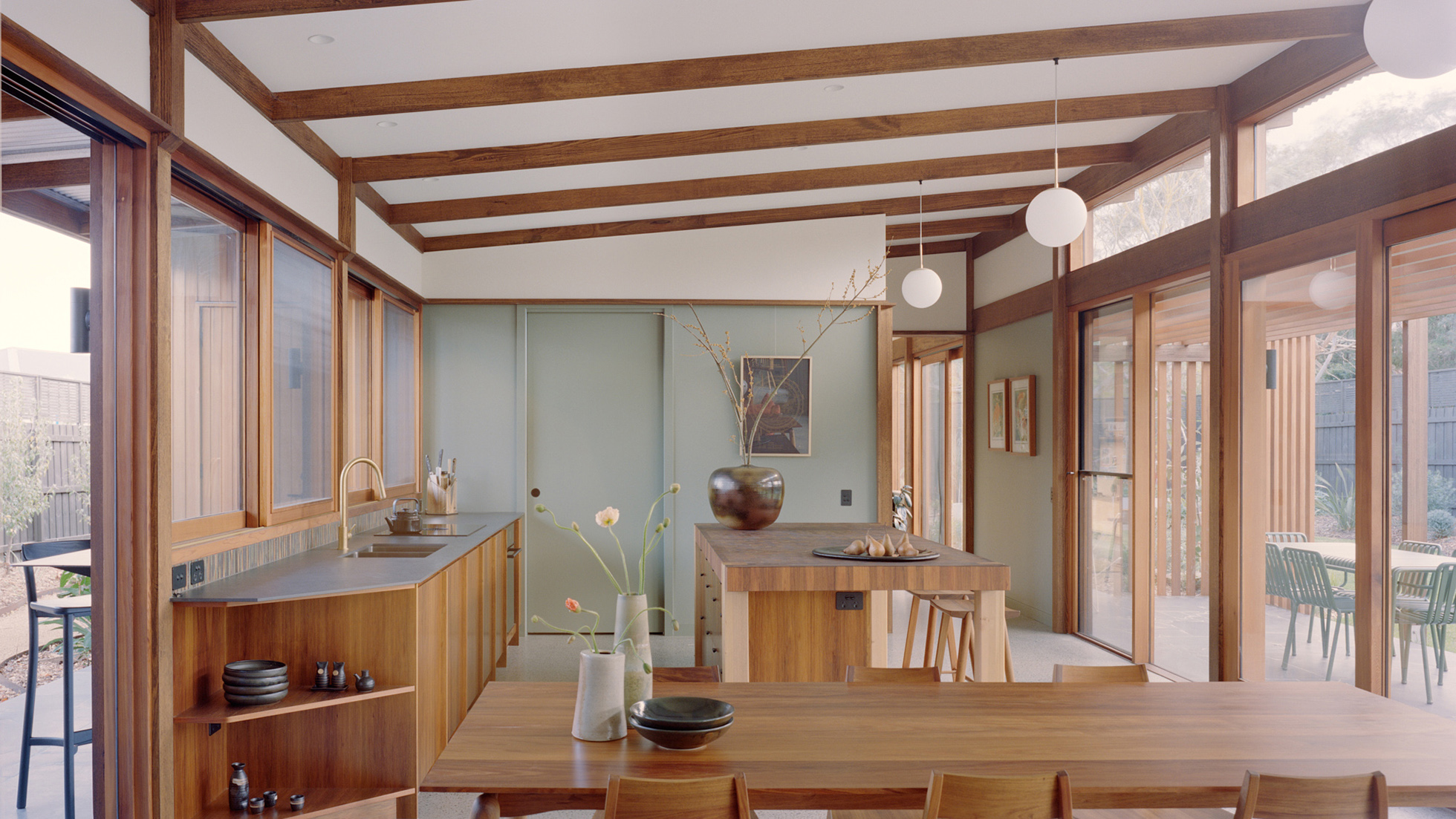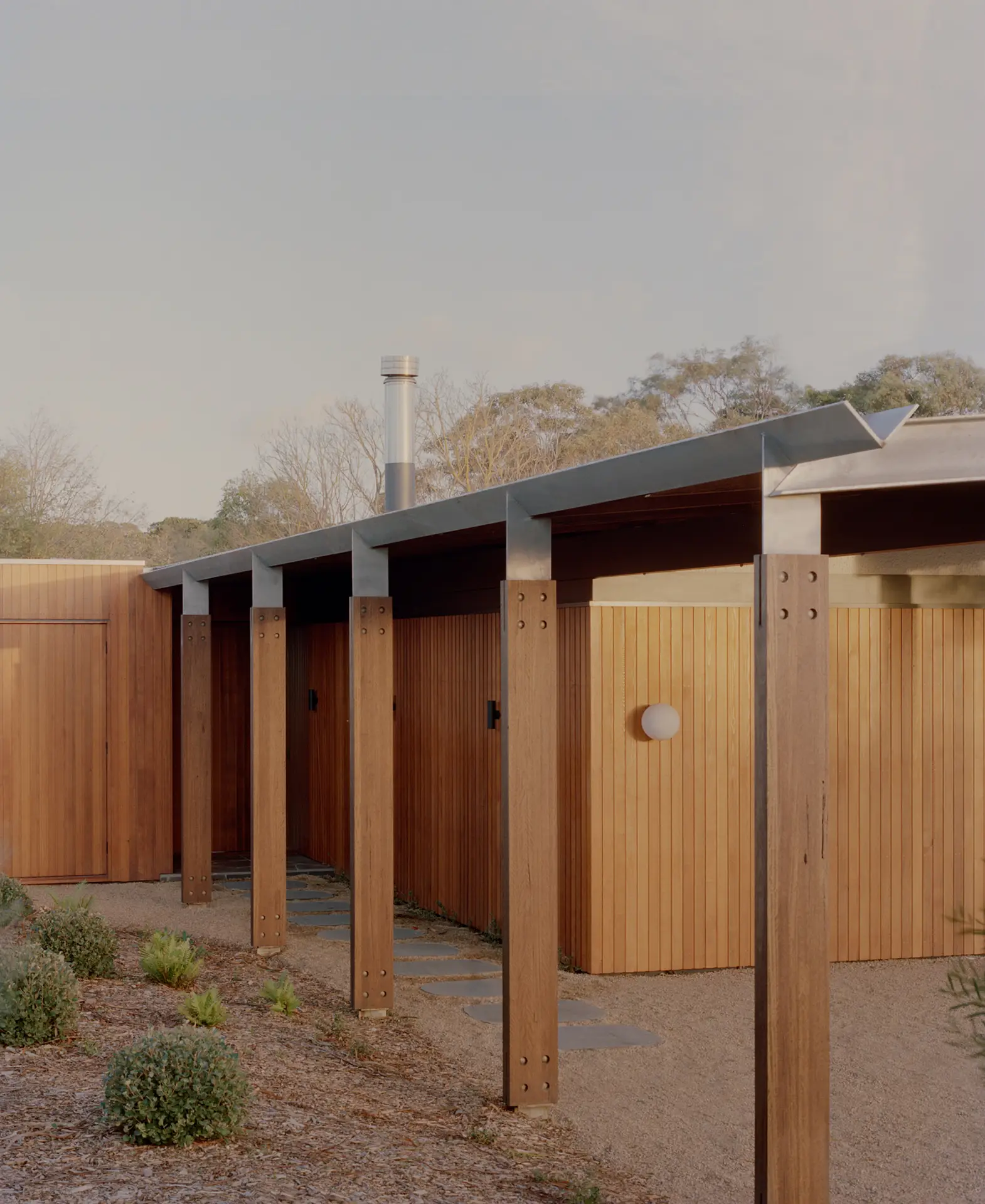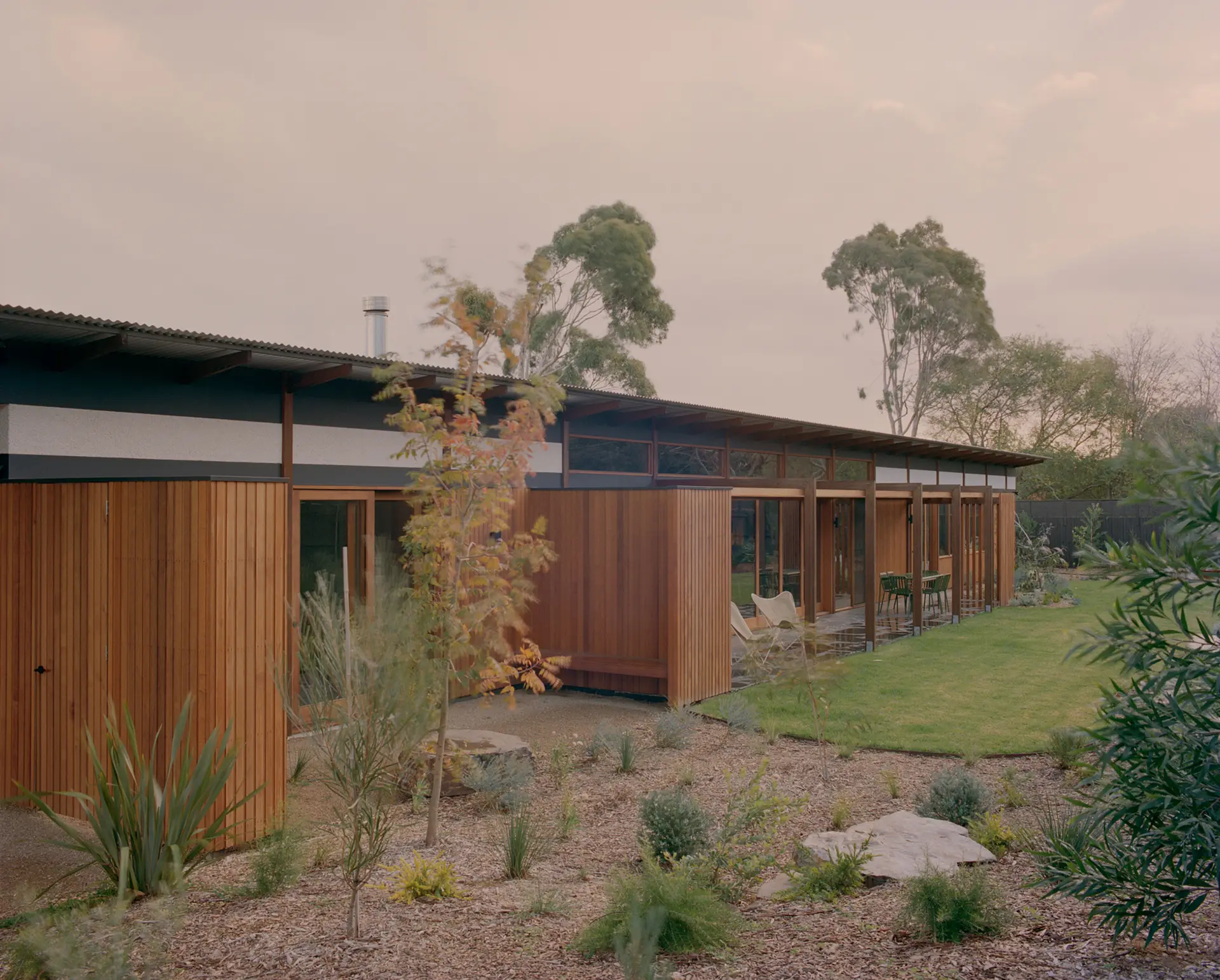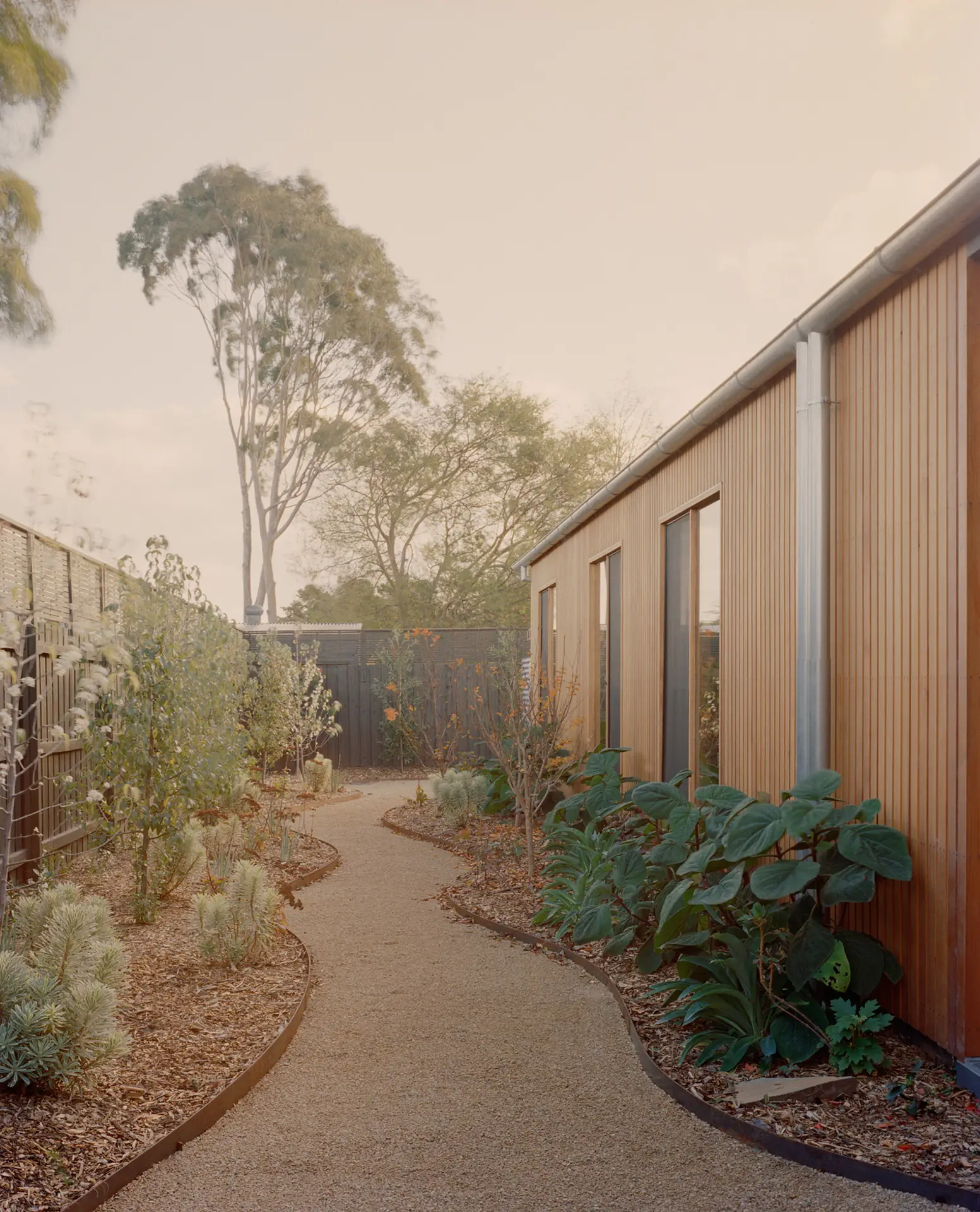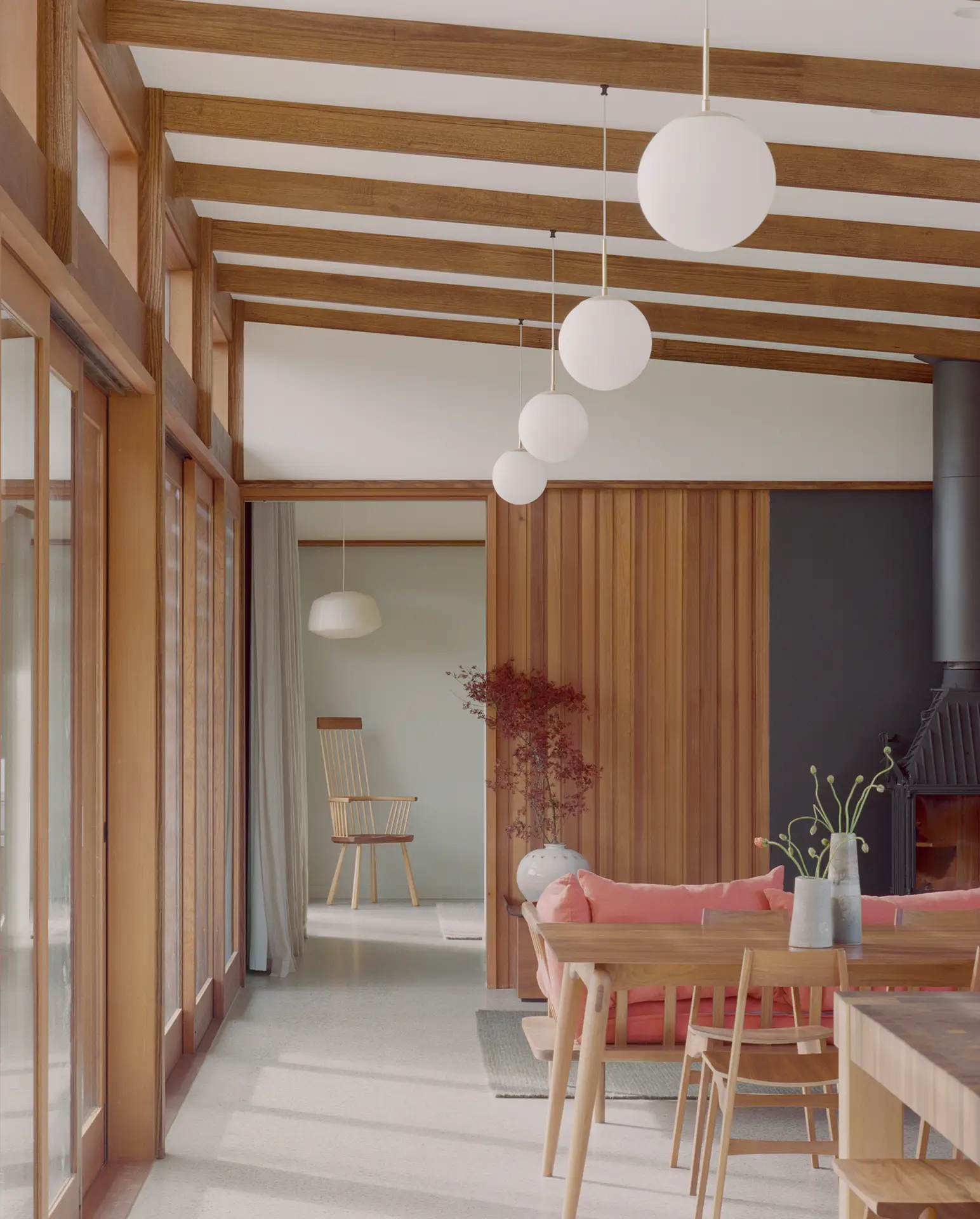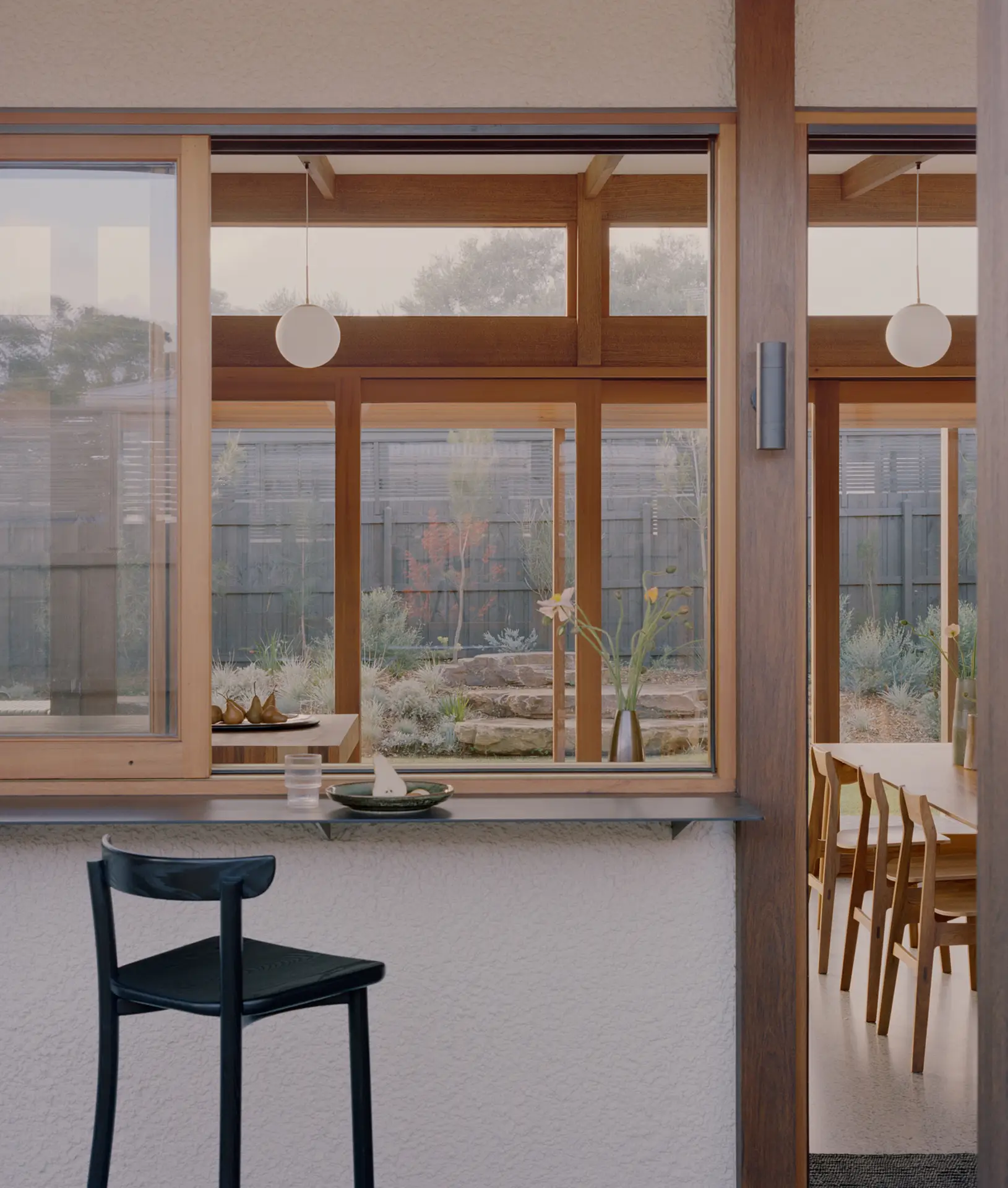Stumpy Gully House | Adam Markowitz Design with Stavrias Architecture
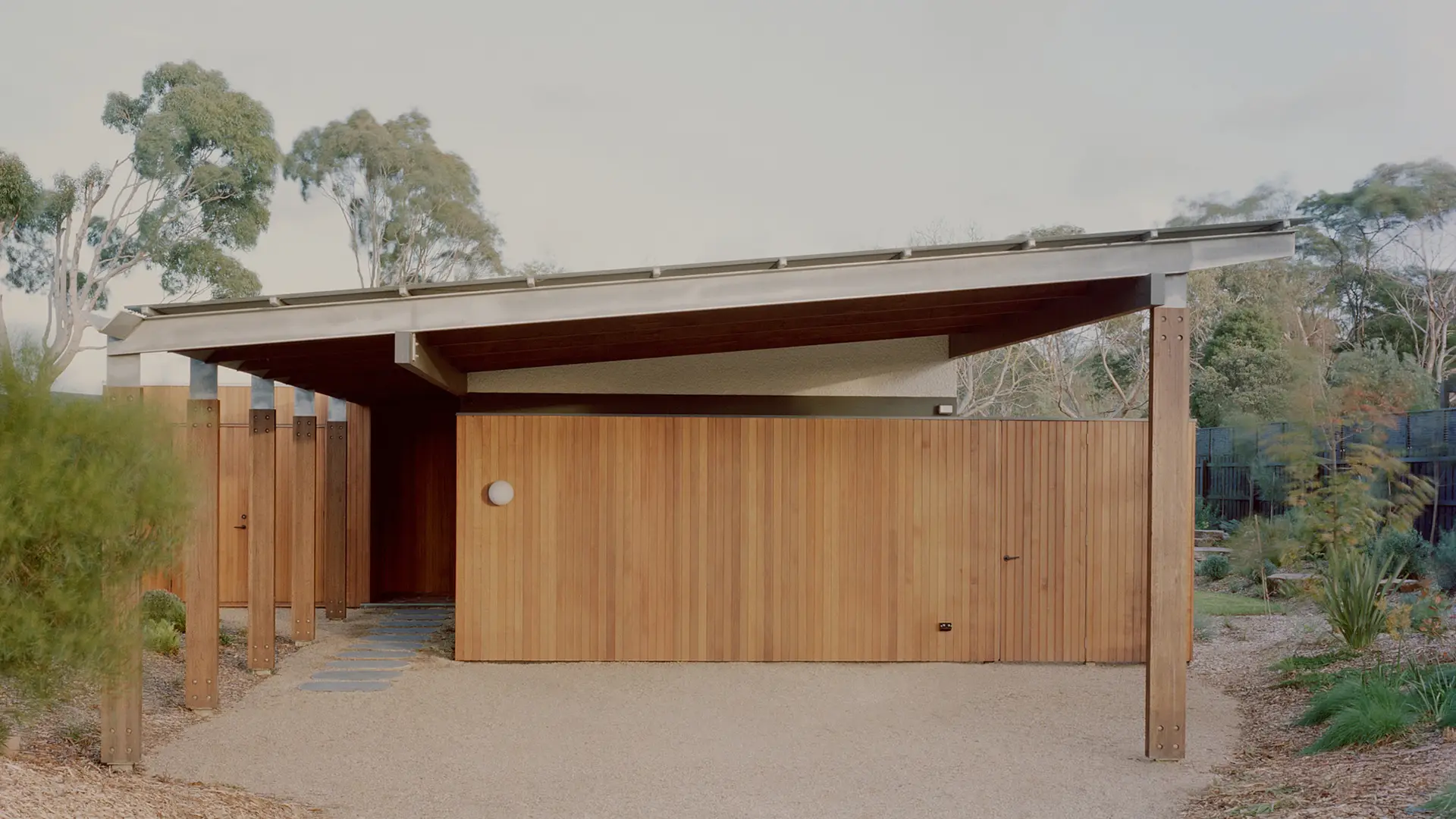
2025 National Architecture Awards Program
Stumpy Gully House | Adam Markowitz Design with Stavrias Architecture
Traditional Land Owners
Boon Wurrung people of the Kulin Nation
Year
Chapter
Victoria
Category
Builder
Photographer
Media summary
A finely crafted approach for a young, growing family, drawing on midcentury ‘beachcomber’, Arts & Crafts and Japanese references. Built on a modest budget for an average middle class family on a typical ¼ acre block, it is a direct riposte to the contextless and homogenous new developments driven by tree-change population shifts in regional Victoria. Stumpy Gully House suggests a more sensitive way to engage with a suburban block that is considerate of solar orientation, street frontage and architectural form. A linear plan creates a dynamic mode of inhabitation – kids/parents, work/home, inside/outside. Enlivened by rigorous steel and timber detailing, and handmade elements by both the architect and local craftspeople.
The design benefits the way my family and live, work, and play by providing a sanctuary from suburbia and keeping us connected to the outdoors while creating a clear balance between family and focus. The large windows and sliding doors create amazing indoor outdoor connection bring nature into our daily life. My office is thoughtfully separated from the kids’ area, ensuring productivity while still feeling close to family. With zones for work, kids, and adults, the house allows me to shift effortlessly between deep focus, quality family time, and relaxation, all within a beautifully integrated space.
Client perspective
Project Practice Team
Adam Markowitz, Design Architect
Nicole Henderson, Project Architect
George Stavrias, Project Architect
Project Consultant and Construction Team
Ross Bakker, Construction Manager
Ray Schneider, Structural Engineer
Jo Ferguson, Landscape Consultant
James Beck, Quantity Surveyor
Floyd Energy, ESD Consultant
Nepean Building Permits, Building Surveyor
